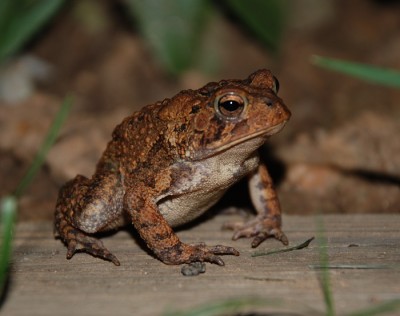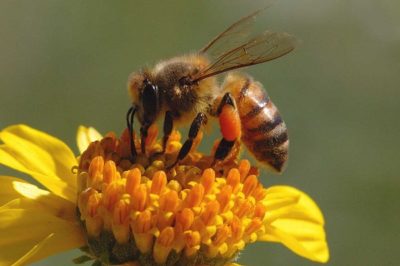|
Listen To The Article
|
 [1]Many of us who live off the grid have learned the benefits of organic gardening. We’ve rejected the destructive trend of the last 70 years, where the idea seemed to be one of destruction. The goal was eradication: pesticides for insects, herbicides to kill weeds, and artificial fertilizers to compensate for destruction of the delicate ecology that nurtured plants.
[1]Many of us who live off the grid have learned the benefits of organic gardening. We’ve rejected the destructive trend of the last 70 years, where the idea seemed to be one of destruction. The goal was eradication: pesticides for insects, herbicides to kill weeds, and artificial fertilizers to compensate for destruction of the delicate ecology that nurtured plants.
In rejecting that trend, organic gardening has become very popular over the last 30 years, especially for those who want self-sustaining gardens on their homesteads.
While many of us have learned the benefits of basic organic gardening, such as use of compost and pest control through companion planting, we can take our gardening success to a new level by using beneficial critters such as toads, frogs, bats and bees. Together, they eat pests, deter harmful insects from your garden, and help pollinate your plants.
1. Toads
Each adult toad can eat up to 10,000 insect pests [2] over a summer, including slugs, beetles, caterpillars and earwigs. It is not easy to import toads into a new habitat, but if you have toads in the general vicinity, you can attract them to your garden with a toad abode. Find a shady spot in the garden with loose soil amended with compost. Use some flat rocks to build a small enclosure big enough for a toad. Place a saucer nearby and keep it filled with water, so that the toad has a place to soak itself.
Order your 2014 Heirloom Solutions seed catalog and get $20 in your account! [3]
If you live in a cold part of the country, make sure your toad has a place to hibernate [2]. You can make one by digging a small trench in friable soil. Take a 4-inch plastic pipe, cut it to 14 inches long, and put in the trench at about a 30-degree angle, with one end protruding about 2 inches above the soil. Backfill the trench with soil. Fill the pipe halfway with loose sand and the rest of the way with composted leaves. This will give your toad a nice, warm place to hibernate.
When the offspring of nearby toads hatch, hopefully one of them will be attracted to your toad abode.
2. Frogs
Frogs offer the same benefits as toads, but they require a moist environment with surface water nearby, such as a pond or small stream. If there’s no surface water nearby, you can try to attract them with a frog pond. However, this only works in wetter climates where frogs are already nearby. You’re unlike to lure any frogs in a hot, dry environment.
3. Bats
Some people don’t like bats. However, they primarily feed at night and avoid people, especially in the day. More importantly, each bat can consume up to 1,200 plant-eating pests a day. They also deter insects in a secondary way because most insects can hear them and will try to stay a hundred feet away from the bat activity. Bats also help cross-pollination.
Bats like long narrow spaces that imitate their natural habit of hollow trees. Typically, the exterior of a bat house is 2 feet by 3 feet. The bat house should be mounted on a building under the eaves or under tree branches 15 to 20 feet off the ground, near some surface water. The bat house should be exposed to at least 6 hours of sun.
Story continues below video
4. Bees
One of the most pleasing days is late spring when the sun is out and the air is filled with the buzzing of bees [4] happily flying around and visiting the spring flowers. Without the cross-pollination of bees, many flowers can’t bloom and vegetables can’t grow.
 [5]Bees seek out areas with ample nectar and pollen [6] to provide the sugar, fats and protein they need. Flowers, particularly those that are blue, purple, yellow or white, attract bees. Make sure and plant different varieties so that flowers are blooming throughout the year (or season in cold-weather climates). Herbs [7] such as basil, marjoram, and rosemary also catch their attention.
[5]Bees seek out areas with ample nectar and pollen [6] to provide the sugar, fats and protein they need. Flowers, particularly those that are blue, purple, yellow or white, attract bees. Make sure and plant different varieties so that flowers are blooming throughout the year (or season in cold-weather climates). Herbs [7] such as basil, marjoram, and rosemary also catch their attention.
You can also attract bees by providing them a bee house. You can get one online cheap or make it yourself. Mount the bee house, facing south, on buildings or trees.
5. Fireflies
Not only do fireflies delight us with their lights, they are ravenous predators [8]. The larva eat snails and slugs, while the adults eat insects. Fireflies don’t bite or sting, and don’t eat plant matter. If you live where fireflies abound, you can attract them to your garden with an area of high grass or shrubs.
Final thought
Let nature’s critters help take care of your garden. Just remember that they are all deterred, or can be killed, with the indiscriminate use of pesticides. One more great reason to grow organically and let nature help your garden, instead of being its enemy.
How do you keep bugs out of your garden? Let us know in the comments below.
Sign up for Off The Grid News’ weekly email and stay informed about the issues important to you [9]
